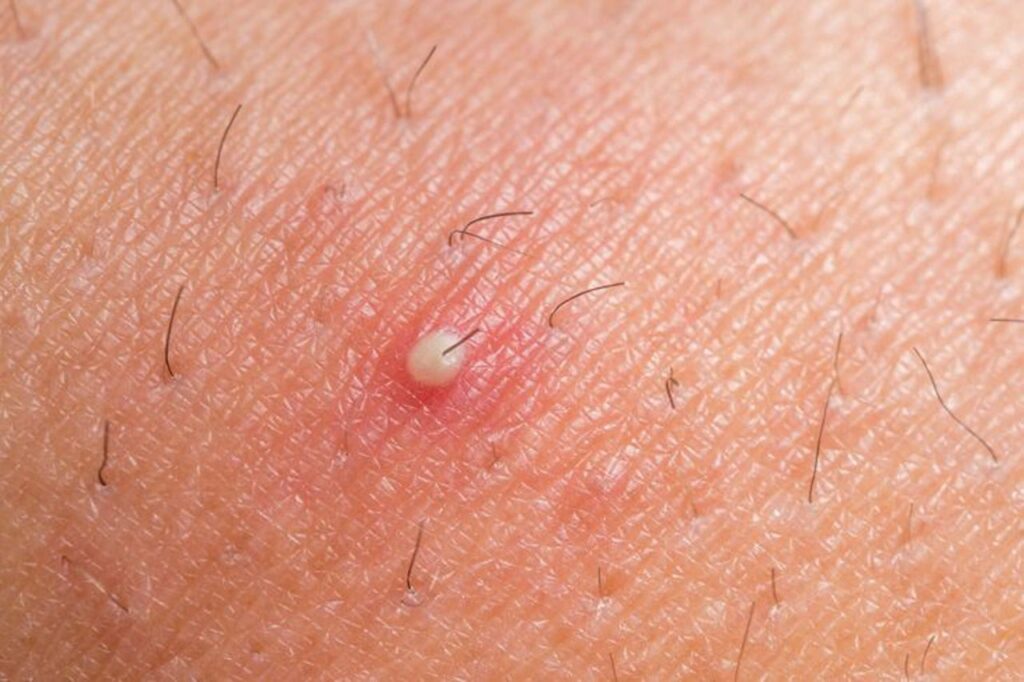Skin checks
Regular skin checks are essential for early detection of skin breakdown and pressure injuries. Timely identification and intervention can prevent progression of skin breakdown.
When to do a skin check
Head-to-toe skin checks should be conducted at least twice daily. Additional skin checks may be required in the following situations:
- following an adverse event, such as a poor transfer or fall
- during a trial of new equipment such as a mattress, shower commode or cushion
- when introducing new clothing that may cause friction or pressure
- when using a new device, such as a different leg bag system or compression garment
- after an episode of incontinence
- during changes in routine, such as travel, starting a new activity, or working longer hours.
Performing a skin check
Perform a skin check by looking at and feeling the skin.
Look
- Use a mirror, take a photograph (a selfie stick can be helpful for this), or have another person inspect the skin when self-examination is difficult.
- For individuals unable to use a standard handheld mirror, modified inspection mirrors—such as ‘quad inspection mirrors,’ ‘handheld inspection mirrors,’ or ‘flexible inspection mirrors’—may be helpful.
- To examine the feet specifically, consider using an inspection mirror mounted on a telescopic arm for better visibility.

Example of skin inspection mirror
Image source: Shepard Centre
Establish and document the person with SCI’s skin baseline to support early identification of potential problems. Any change in skin appearance—such as differences in colour, texture, temperature, or moisture—may signal the beginning of a pressure injury and should be evaluated further.
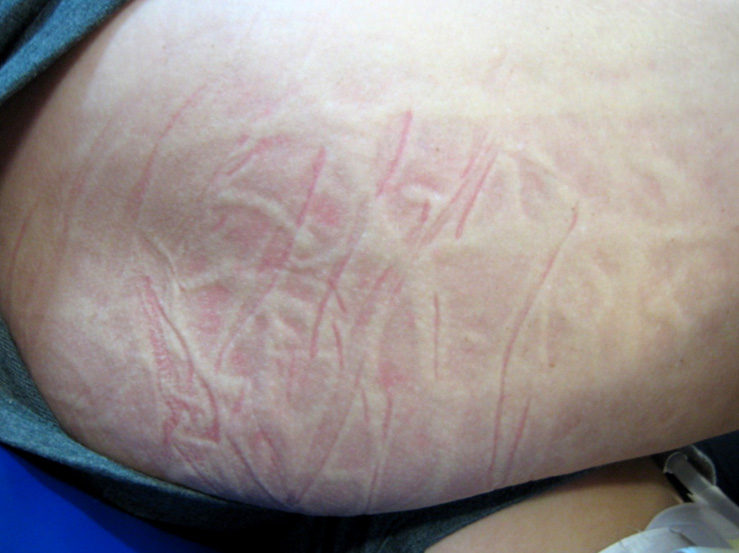
Example of change to skin appearance – surface related skin impressions.
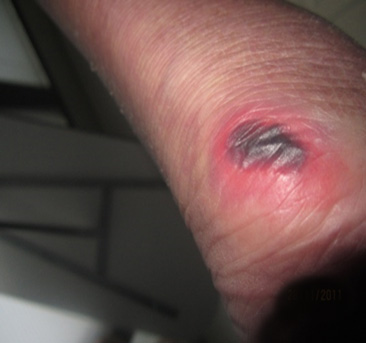
Check bony prominences, as these are high-risk areas.
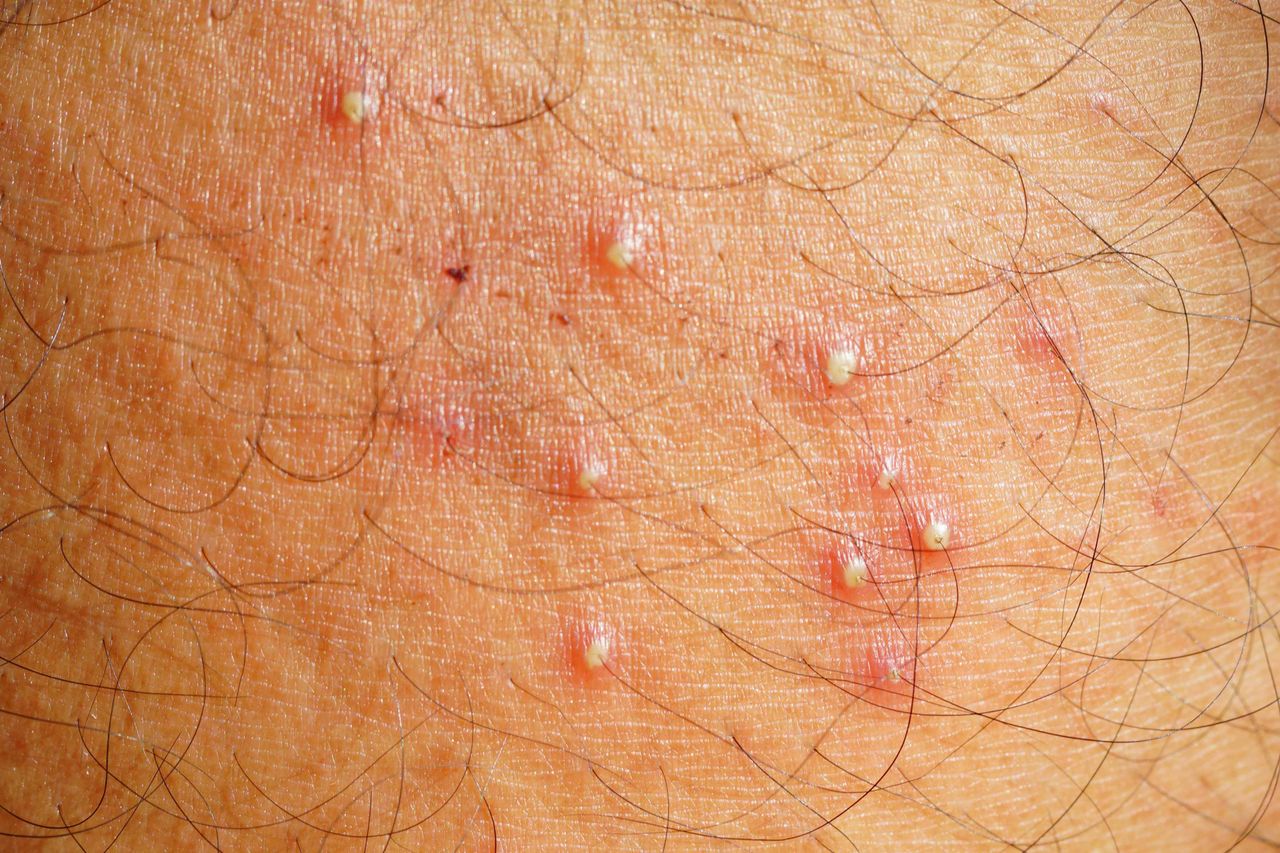
Look for pimples, bruising or scrapes.
Example of change to skin appearance and texture
Image source: English Dermatology
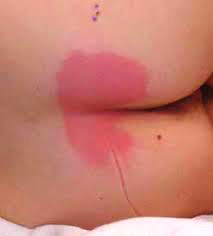
If redness is present, check for blanching. Blanching indicates the return of blood supply to the tissue. Return of colour from white to pink should occur within 2 seconds. If there is non-blanching erythema, a stage 1 pressure injury is present.
Example of erythema over sacrum
Image source: National Pressure Ulcer Advisory Panel, 2014
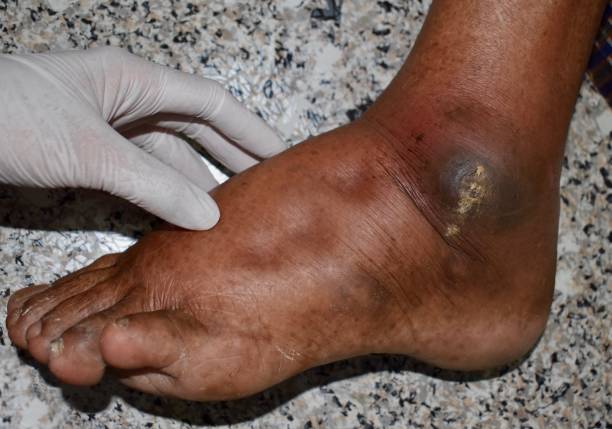
People with darker skin tones may not see skin changes early. It is important to feel the skin when checking.
Image: Example of oedema and changes to skin colour.
Feel
Palpate the skin for any abnormalities such as lumps, bumps, pimples, changes in texture, or areas that feel unusually soft, firm, or “boggy”. A “boggy” feel may indicate tissue damage or the early stages of a pressure injury.
Localised heat or warmth may also suggest inflammation, infection, or another underlying issue and should be monitored closely.
Adapted mirror options
In cases where the individual has impaired grasp, there are some simple options for holding a mirror in position, which can be helpful while performing skin care checks. Options include:
- pillows to position body and mirror
- adapted phone holders or “selfie sticks”
- manufacture of an adapted handheld mirror. Technology for Ageing and Disability Queensland may be able to assist with manufacturing a mirror, if required.
- Contact QSCIS therapists for further advice and a pattern to manufacture a hand held mirror using a plastic mirror and perspex or thermoplastic.
